Interplanting, an immensely popular gardening technique, involves growing different plants nearby to maximize space and improve yield. However, not all combinations prove to be beneficial, as some can create competition.
Cucumbers and tomatoes aren’t the perfect pair for your garden, as planting them side by side will create many challenges, making interplanting problematic.
These two may seem like a great duo, but they have hidden conflicts that can disrupt growth and productivity. Planting them together will lead to unexpected challenges that frustrate seasoned gardeners and impact their growth and productivity.
In this article, we’ll explore why interplanting cucumbers and tomatoes isn’t advisable at all and will also provide expert tips on designing a thriving and balanced garden.
Read through this guide and make smarter planting decisions so that you can enjoy a healthy, stress-free, and productive garden in the long run.
Also, read: How To Plant Basil And Tomatoes Together?
Downsides Of Interplanting Cucumbers And Tomatoes
Table of Contents
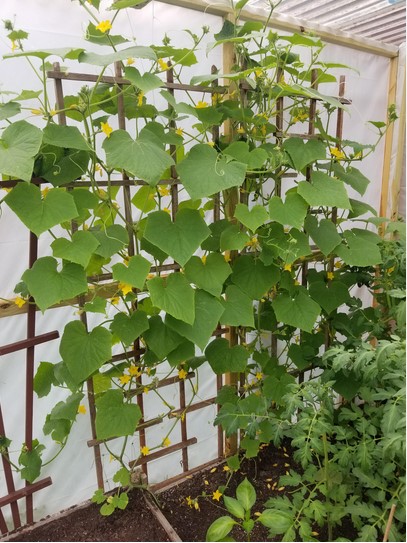
Below we have discussed the downsides of interplanting cucumbers and tomatoes, as it leads to several challenges that hinder growth and productivity.
1. Similar Nutritional Needs
Both tomatoes and cucumbers have similar nutritional needs, so interplanting them will result in a lot of challenges.
Both of them rely heavily on nitrogen, phosphorus, potassium, and other micronutrients for healthy growth, productivity, and fruit development. Nitrogen is essential for leaf growth, phosphorus is crucial for root development and fruiting, and potassium is essential for overall growth and, in turn, improves the flavor and quality of the fruits.
Interplanting will therefore mean proximity and result in an imbalance in soil fertility along with nutrient depletion that will eventually impact the plant’s health and productivity.
Therefore, to avoid this issue, both plants should be planted separately for healthier growth and higher yields.
2. Overlapping Growth Habits
Both cucumbers and tomatoes have overlapping growth habits that can create a lot of challenges when interplanted. Both have got a sprawling growth pattern that leads to a high level of competition and lesser yield.
Also, when both are grown together, the cucumber vines at times get tangled with the tomato plants, thereby making harvesting and maintenance a difficult task. Additionally, there lies a chance of fungal diseases due to the dense plantation techniques.
Apart from this, the competition for sunlight is real, as both plants need full sunlight for optimal growth alongside proper and consistent watering practices.
It is therefore advisable to use separate trellises or to keep enough space between the plants to improve the airflow and also to reduce competition.
3. Susceptibility To Diseases
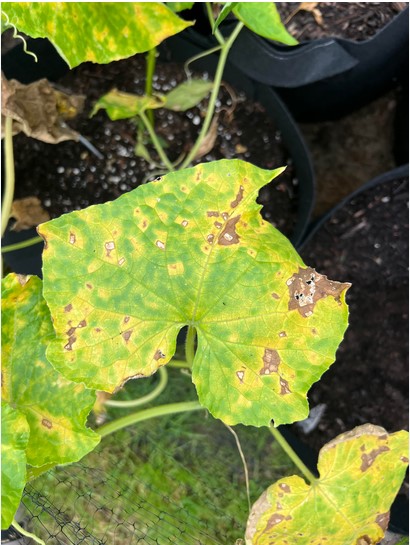
Both tomatoes and cucumbers are highly susceptible to similar diseases that will eventually lead to a rapid spread of disease, thereby weakening the plants.
The overlapping growth traps the humidity and creates a perfect breeding ground for fungal infections that later on direct to defoliation and stunted growth patterns.
Also, the diseases spread rapidly in overcrowded or waterlogged conditions when both crops are in a tough competition for space and nutrients.
Even though growing tomatoes and cucumbers seems to be a bit tempting, their shared susceptibility to diseases makes it difficult to grow them together.
4. Humidity Preferences
Since both tomatoes and cucumbers are warm crops, they have entirely different humidity preferences that can furthermore create challenges when interplanted.
So, managing the moisture needs effectively will ensure healthy plant growth and will also effectively prevent disease.
In the case of tomatoes, they prefer moderate humidity levels, as excess moisture will lead to an increased risk of fungal diseases such as blight and powdery mildew.
In the case of cucumbers, they prefer higher humidity levels that help to support vigorous vine growth.
Therefore, growing these two plants together can be a difficult task to maintain the right balance and strike the right chord, as high humidity favors cucumbers but lower humidity favors tomatoes.
Therefore, their difference in humidity preference needs to be handled very carefully and will require careful environmental control to prevent stress and disease.
5. Pest Attraction
Both tomatoes and cucumbers attract garden pests when they are grown together and can create a breeding ground for infestations.
Aphids, whiteflies, spider mites, cucumber beetles, hornworms, and cutworms are some pests that are known to cause significant damage to crops, and interplantation will also increase the risk of infection.
So, growing both the cucumbers and tomatoes together will create a pest hotspot that leads to increased infestations and potential crop loss. Even though you can manage pests with proper care, still separating these crops or using strategic pest control methods will be a smarter way to deal with the situation.
6. Difference In Watering Needs
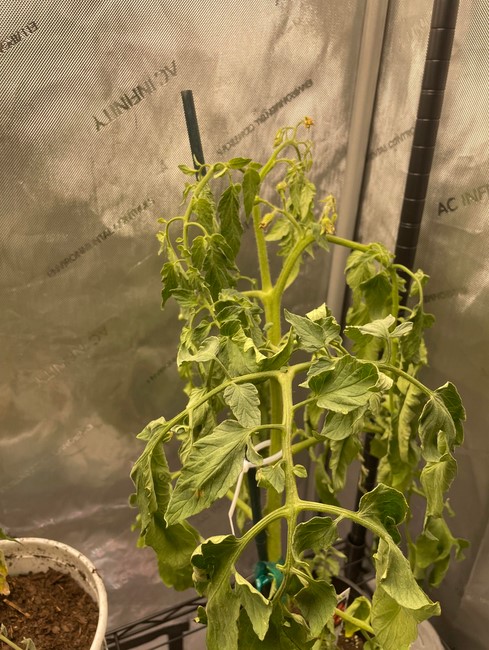
Even though both tomatoes and cucumbers need proper and consistent watering, their moisture requirements are different, which is a big challenge. Overwatering or underwatering can negatively impact both crops, thereby leading to disease, poor fruit development, and overall plant issues.
Cucumbers are highly water-dependent, whereas tomatoes prefer less frequent watering, so the challenges of growing them together and balancing their needs can be a difficult task.
Due to these contrasting watering needs, careful water management is essential when you grow two crops together. Also, a well-planned irrigation system or a strategic separation will help both plants to thrive well without compromising on the growth and fruit quality.
7. Trellising And Space Management Issues
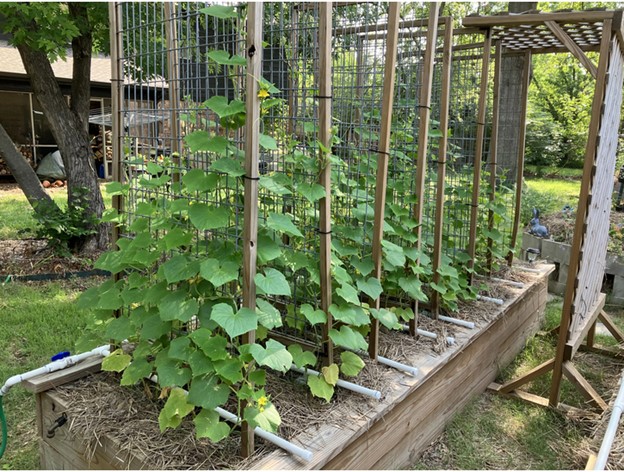
Both cucumbers and tomatoes require trellising and space management to maximize their growth. However, both have different growth habits and spacing needs that result in competition, eventually leading to overcrowding, increased disease risk, and reduced yields.
Their competing growth habits, different trellising requirements, disease concerns, and competition for space will lead to reduced yield and stunted growth.
So, growing them separately by careful planning or by using strategic spacing techniques prevents overcrowding and competition and in turn helps both the plants to thrive without interfering with each other.
9. Poor Yield And Stress
Interplanting tomatoes and cucumbers can eventually result in poor yield and plant stress, as planting both plants too closely will bring forth the struggle to get nutrients, water, and sunlight to thrive.
Without proper planning, both growing tomatoes and cucumbers will result in poor yields and plant stress that will maximize productivity and help you to implement strategic growth techniques to reduce competition.
Best Companion Plants For Cucumbers
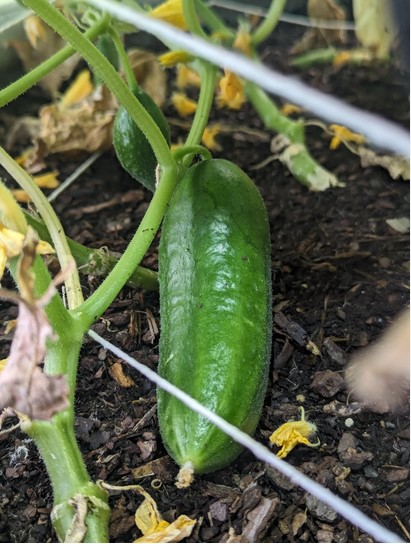
Below we have discussed some of the best companion plants for cucumbers that can enhance their overall growth and also help to deter pests, thereby improving the overall garden productivity:
- Beans
- Sweet corn
- Drill
- Sunflowers
- Borage
- Radishes
- Chives
- Marigold
- Peas
- Nasturtiums
Best Companion Plants For Tomatoes
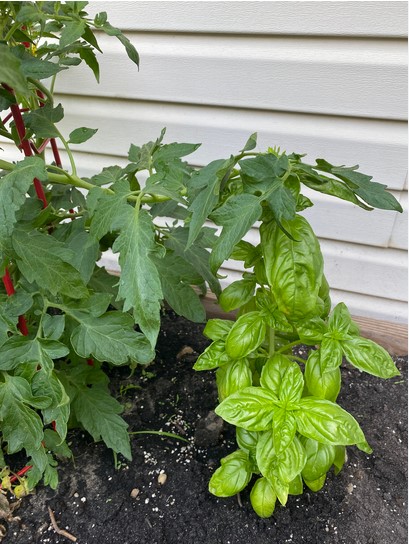
Below we have discussed some of the best companion plants for tomatoes:
- Basil
- Marigolds
- Herbs and Flowers
- Carrots
- Peas
- Asparagus
- Onions
- Lettuce
- Spinach
Wrapping Up
Their conflicting needs and common vulnerabilities make it less ideal to grow both tomatoes and cucumbers together.
So, it is best to plant them separately and carefully so that their growing conditions can be managed and optimized for healthy productivity and fewer pest or disease issues.
Additionally, implementing proper growth techniques will help to minimize the conflicts and take steps towards a more balanced and productive garden.
Leave a Reply